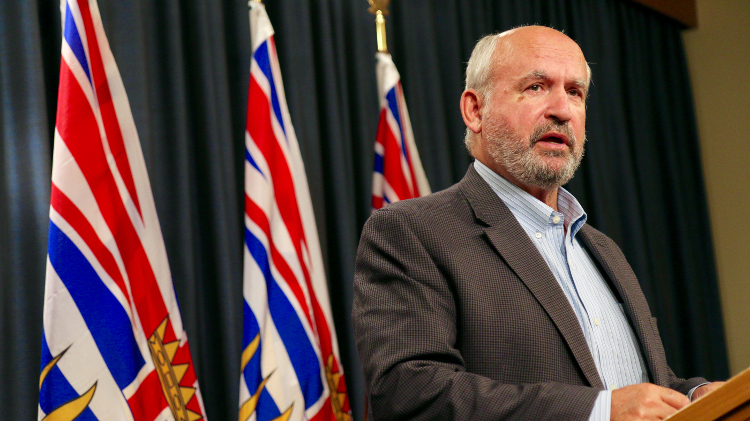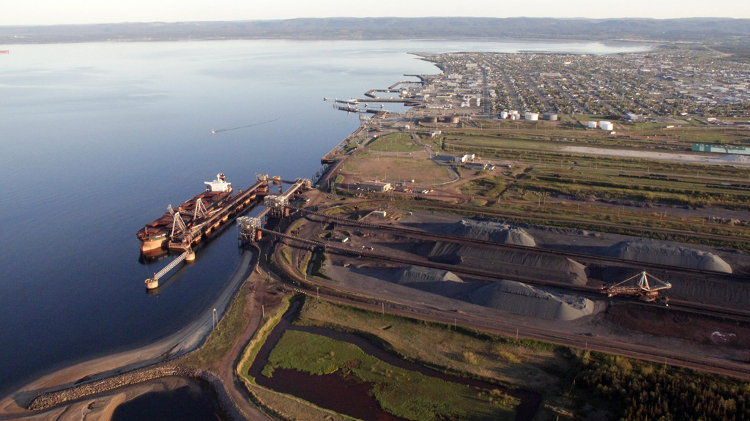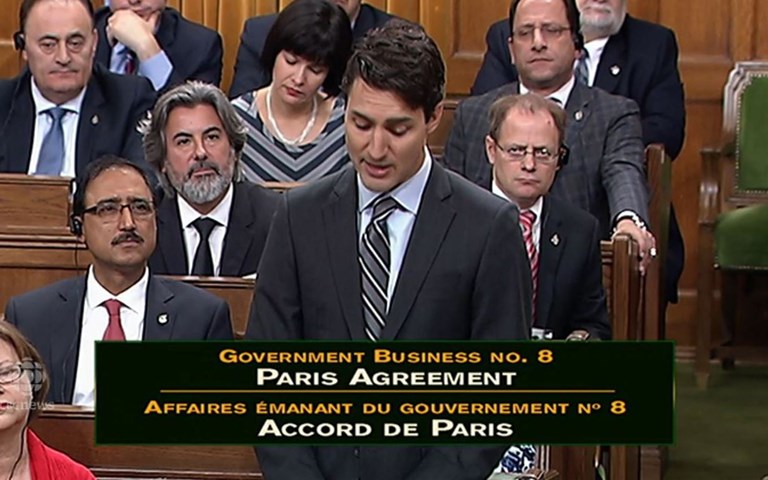Trudeau said revenue generated from carbon pricing or cap-and-trade will stay with the provinces, and will be revenue-neutral for the federal government | Screenshot via CBC.ca
Prime Minister Justin Trudeau announced a national carbon pricing scheme in early October that would require all provinces and territories to have a carbon price or cap-and-trade system in place by 2018, or adopt the federal government’s “floor price” of $10 per tonne of CO2 in 2018, increasing to $50 per tonne in 2022.
“If neither price nor cap-and-trade is in place by 2018, the government of Canada will implement a price in that jurisdiction,” Trudeau announced. He said the policy will be revenue-neutral for the federal government, with all revenue generated staying in the provinces and territories.
Canada’s mining sector emits greenhouse gases (GHG) primarily through the consumption of fossil fuels, and the Canadian Industrial Energy End-Use Data and Analysis Centre reports that the sector was responsible for around one per cent of total GHG emissions in 2014.
The Mining Association of Canada (MAC) voiced its support for a national price on carbon in April, but noted after Trudeau’s announcement that the proposed scheme includes only one of the seven principles the association issued on climate change policy design. Among the other suggestions were investing policy-related revenue into the “transition to a lower carbon future,” addressing competitiveness concerns across all sectors, having flexibility to changing conditions and supporting lower-emission generation technologies and early adopters.
“It’s critical that any carbon price regime consider all of the principles to ensure it is successful in meaningfully reducing emissions, while supporting economic growth across the country,” MAC CEO Pierre Gratton said in response to the federal government’s announcement.
According to MAC, 93 of Canada’s 121 metal and non-metal mines are currently operating in a jurisdiction where there is an established price on carbon, or a commitment to implement one. British Columbia introduced a carbon levy in 2008, and Quebec has used a cap-and-trade system since 2013. Both Alberta and Ontario will launch carbon pricing schemes in 2017. Ministers from three of the provinces yet to introduce carbon pricing schemes – Saskatchewan, Nova Scotia and Newfoundland and Labrador – walked out of a meeting with Environment Minister Catherine McKenna on the day of the announcement, in protest of the new plan.




